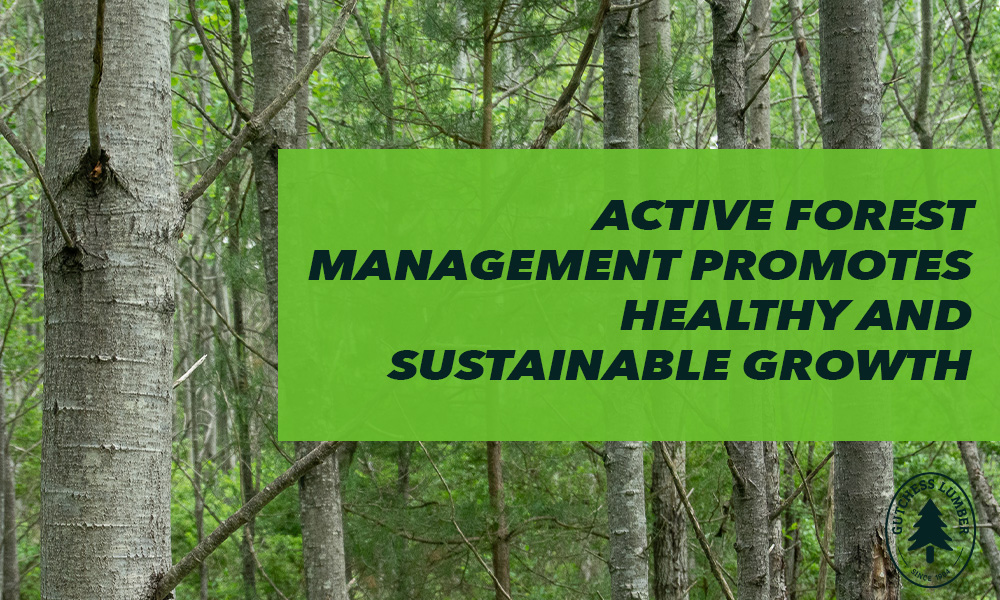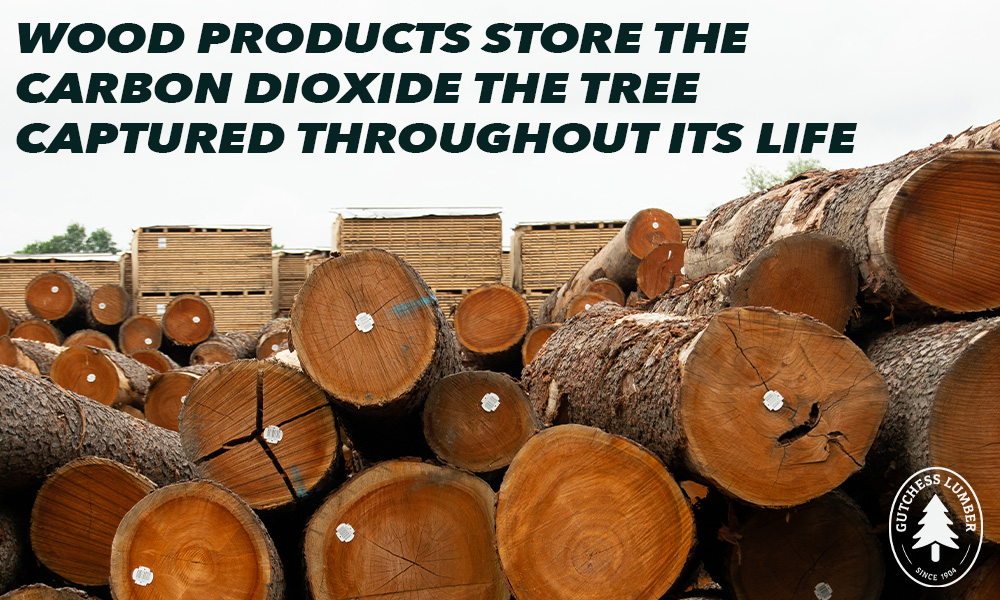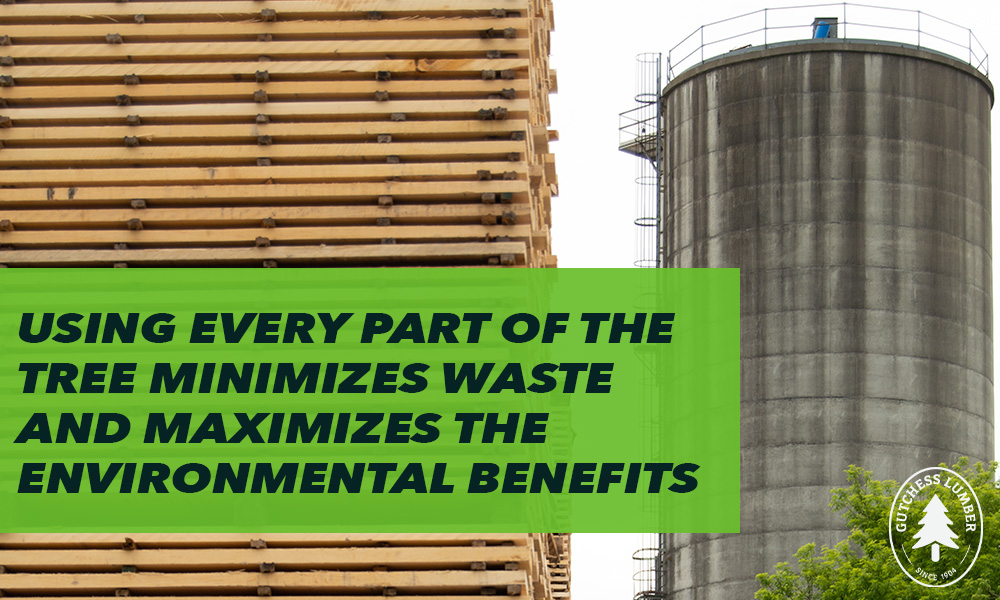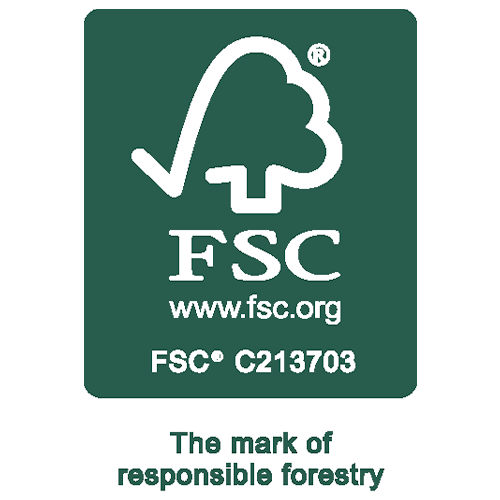In elementary science class, we learn that forests are the lungs of our planet. They provide clean air, filter our water, and offer vital habitats for countless species. At Gutchess Lumber, we understand the importance of these ecosystems. We are dedicated to responsible forestry practices, like active forest management, that ensure forest health and longevity for future generations.
One of the cornerstones of our approach is active forest management. This powerful tool can nurture healthy and resilient forests. Let’s explore how it benefits our planet’s vital ecosystems.

Active Forest Management
Active forest management involves carefully selecting and harvesting mature trees, sometimes called selective harvesting. Now, you might be wondering, wouldn’t this harm the forest? Quite the opposite. When done with a long-term perspective, it can promote healthy and sustainable growth. Here’s how:
- Increased Sunlight for Young Trees: Selective harvesting creates openings in the forest canopy, allowing more sunlight to reach the forest floor. This sunlight is crucial for younger trees, stimulating their growth and development. A diverse mix of age classes within the forest creates a more resilient ecosystem. If a mature forest’s canopy blocks all the sunlight from reaching the forest floor, no new growth will occur.
- Reduced Competition for Resources: Mature trees can dominate resources like water and nutrients. By strategically removing some of these trees, we create more space and essential resources for younger trees to thrive. This fosters a healthy competitive environment, allowing a diverse range of species to flourish.
- Enhanced Forest Resilience: Active forest management can help mitigate threats like disease and wildfires. By removing diseased or weak trees, we can prevent the spread of illness and create natural firebreaks, reducing the risk of catastrophic wildfires.
“Offset protocols should incentivize active forest management, which is more effective in capturing and storing atmospheric carbon in forest and wood product carbon pools than a policy of hands-off management that precludes periodic harvests and the use of wood products,” the American Forest Resource Council wrote.
Natural Regeneration
At Gutchess Lumber, we allow Mother Nature to do her thing. When we responsibly harvest hardwood trees, natural regeneration occurs. Following selective harvesting, sunlight reaches the forest floor, triggering a natural phenomenon. Existing tree seedlings that might have been dormant due to limited sunlight receive the necessary energy to flourish. Additionally, seeds from surrounding trees are encouraged to germinate, creating a new generation of growth.
This approach leverages the incredible power of nature, ensuring a diverse mix of trees that fosters a vibrant and healthy forest ecosystem for all its inhabitants.
Planting Trees versus Natural Forest Regeneration
While tree planting initiatives often capture headlines and public enthusiasm, it’s crucial to recognize that planting isn’t always the most beneficial approach for forest restoration. Introducing non-native tree species can disrupt the delicate balance within an ecosystem, out-competing native plants for resources and reducing overall biodiversity. Even planting native trees can have unintended consequences in certain situations. A study measuring the replanting problem’s extent revealed that tree planting is extremely widespread, most notably in incompatible environments. The study’s author suggests that prioritizing natural forest regeneration can be a more effective and sustainable strategy in many cases.
“The best and cheapest answer [to promote forest health] usually just to step back and let nature do the job,” says lead author Matthew Fagan, an assistant professor of geography and environmental systems at the University of Maryland.
In contrast to replanting, natural regeneration allows the forest ecosystem to dictate its regrowth. Sunlight reaching the forest floor awakens dormant seedlings and encourages natural seed dispersal from surrounding trees. This fosters a diverse mix of native species, creating a naturally resilient forest structure that benefits all its inhabitants. By prioritizing natural regeneration, we allow Mother Nature to ensure our forests’ long-term health and biodiversity.

Selective Harvesting and Long-Term Carbon Storage
The story doesn’t end with the harvesting of trees. The hardwood products we manufacture offer another significant environmental benefit. These wood products store the carbon dioxide the tree captured throughout its life. This carbon remains locked away for decades within the furniture, flooring, and other beautiful creations crafted from our sustainable building materials.
By utilizing these selectively harvested trees for long-lasting products, we contribute to mitigating the effects of climate change.
How does Selective Harvesting Help the Environment?
Selective harvesting focuses on removing mature trees that have reached their peak carbon storage capacity. While these giants have played a vital role in capturing carbon for decades, their ability to absorb additional carbon dioxide slows with age. We strategically remove these mature trees and create space and resources for younger trees to thrive. These younger trees, with their faster growth rates, act as powerful carbon sinks, efficiently capturing atmospheric carbon dioxide and locking it away for years to come. This continuous cycle and the long-term carbon storage achieved through our sustainable wood products make responsible forestry a compelling alternative to building materials with higher embodied carbon footprints.
Gutchess Lumber: Committed to a Greener Future
At Gutchess Lumber, we are deeply committed to responsible forestry practices. We believe this approach is essential for a healthy planet and a sustainable future, so we employ a forest team of over 30 qualified foresters with decades of experience carrying out active forest management programs on company and private land. We continuously strive to refine our methods, ensuring the well-being of our forests and the resources they provide for generations to come. Here are some ways we demonstrate this commitment:
- Selective Harvesting: We only harvest mature trees, following strict guidelines to maintain a healthy forest ecosystem.
- Responsible Sourcing: Our forestry operations promote our shared commitment to long-term forest health. They manage company and private land within a 100-mile radius of our manufacturing facilities to ensure active forest management plans are followed and trees are responsibly harvested to allow natural forest regeneration.
- Education and Advocacy: We actively support research and education initiatives focused on sustainable forestry practices.
- Minimizing Waste: We use every part of the tree, ensuring nothing goes to waste.

At Gutchess Lumber, we’re committed to utilizing every part of the harvested tree to its fullest potential. This minimizes waste and maximizes the environmental benefits of these valuable resources. The bark, for instance, isn’t discarded – it’s transformed into beneficial mulch that nourishes gardens and landscapes. Even the sawdust generated during the milling process finds a purpose, fueling our on-site boilers and contributing to a more sustainable energy source for our operations. This commitment to whole-tree utilization ensures nothing goes to waste, further solidifying our dedication to responsible forestry and creating a greener future for all.
We invite you to learn more about our dedication to responsible forestry and how you can contribute to a sustainable future by sharing our free Lumber Education resources, including free social media posts and press releases.

